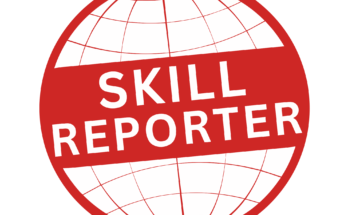South Korea, Germany, and Japan are most prepared for the coming wave of automation, according to a new report by The Economist. The U.S., on the other hand, ranks ninth out of 25 countries.
And the most-at-risk countries?
Mexico, Vietnam, and Indonesia.
Looming advances in robotics, artificial intelligence, and automation threaten to make many jobs obsolete over the next few decades. In worst-case scenarios, 800 million jobs could be lost globally; in best-case scenarios, robots squeeze humans out of just a few at-risk occupations.
Of course, too much automation can cause problems too, as Tesla CEO Elon Musk has recently acknowledged.
Both very rich and very poor countries will fare better than average in the coming massive changes, according to the report. Rich countries are adding robots quickly, and have the resources to prepare their populations for coming changes. Poor countries, on the other hand, have less mass manufacturing that is at risk from automation.
The most-challenged nations will be middle-income countries with significant manufacturing capacity.
But it’s not just manufacturing jobs that are on the potential chopping block, the ABB-sponsored report says. White collar jobs are at risk too.
“The advent … of highly intelligent technologies … has added a new dimension to discussions of future automation,” the report says. “Namely the prospect that large numbers of roles performed today by humans, wearing white or blue collars, will be eliminated by machines.”
How can countries improve their odds?
STEM education programs focusing on science and technology is one step. Focusing on soft skills such as creativity is another. Life-long learning programs to up-skill regularly, and vocational training that emphasizes working with robots are also important steps governments can take to prepare workers to move their jobs up-market.
Interestingly, countries with the most robots are also the richest and have the lowest unemployment rates. The report scores countries on three main categories: innovation environment, education policies, and labor market policies.
Innovation keeps countries globally competitive, while education policies maintain a supply of trained workers. But labor market policies that connect to education and retraining are critical to helping workers being displaced by automation to find new jobs, which are often more skilled.
“The majority of our production lines employ a mix of automated stations and manual operations for the various process steps, and we expect this to remain the case for the foreseeable future,” the report quotes Foxconn’s general manager of automation technology Dai Chia-peng as saying. “We need system programmers, automation engineers and maintenance technicians working on automated production lines to ensure smooth operations.”
Foxconn employs more than 1.300,000 people, most of them in China. It is a major manufacturer of high-tech devices such as smartphones and laptops.
Automation via robots might target factories and physical goods, but automation via AI will affect office jobs and virtual products as well.
“Traditionally technologies have automated a range of tasks that humans might not have wanted to do or might not have defined them as humans,” says Elizabeth Fordham, director of education and skills at the Paris-based Organisation for Economic Co-operation and Development. “AI and robotics, however, are starting to automate higher order, non-routine tasks, some of which require critical thinking and creativity.”
Some experts think the job losses from automation will be minimal, or even zero … because we’ll create new jobs as fast as old ones are filled by machines. James Bessen, a professor of economics at Boston University, says that we’ll create new demand for services that don’t currently exist … and that perhaps we can’t even think of right now.
And others, like Tesla CEO Elon Musk, think that human adaptability is a critical differentiator.
“Humans are underrated,” Musk recently tweeted. But even the most optimistic think we’ll need some help to get over the hump.
“Governments need to have a strategy for automation,” says Alan Manning, a professor of economics at the London School of Economics. “I don’t think you can just leave this to the market and believe it will deliver the right level of innovation.”
Here are the 25 evaluated countries, in order of preparedness for the coming changes of automation and robotics:
South Korea
Germany
Singapore
Japan
Canada
Estonia
France
UK
US
Australia
Italy
China
UAE
Malaysia
Turkey
Russia
Argentina
India
Brazil
Colombia
Saudi Arabia
South Africa
Mexico
Vietnam
Indonesia
Note: Write-up written by John Koetsier , Contributor is a journalist, analyst, author, and speaker with Forbes.com, shared for public awareness with reference from the information provided at Forbes.com



